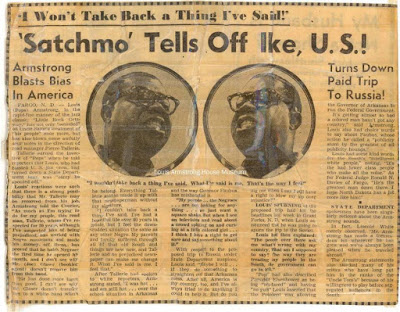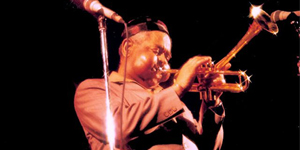Artist-Educators, Blog, Jazz on the Tube Interview, Podcasts
Interview with Ronnie Burrage
Download the mp3 here
Who do call when you need a rock solid drummer?
Sonny Rollins, McCoy Tyner, Jackie McLean, Woody Shaw, Freddie Hubbard, Sonny Fortune, Doc Cheatham, Sir Rolland Hanna, Michael Brecker, Wayne Shorter, Jaco Pastorius, Chico Freeman, Hamiet Bluiett, and many others have all agreed: Ronnie Burrage.
In this call, we talk about Ronnie’s fascinating family, his career as a top go-to jazz drummer, and his inspiring work using music to serve the community.
Ronnie’s latest project is bringing young people to elder homes so they can enjoy music and talk about it – and life – together. Robbie calls it “gen-to-gen”, generation-to-generation, and we get into why it’s so important on the call.
You can support Ronnie’s community work by voting for his project.
You have to open an account to vote. After, you open the account you’ll be given choices to vote for. Vote for the World Rhythm Academy.
Yes, the process is a pain, but it’s worth doing.
Remember: The rules allow you to vote every day, once a day for the duration of the contest.
Vote for the World Rhythm Academy
Click here for info about Ronnie’s World Rhythm Academy
The Ronnie Burrage Trio featuring Archie Shepp: “Straight No Chaser.”
You have to open an account to vote. After, you open the account you’ll be given choices to vote for. Vote for the World Rhythm Academy.
Yes, the process is a pain, but it’s worth doing.
Remember: The rules allow you to vote every day, once a day
Vote for the World Rhythm Academy: https://encore.givkwik.com/account
You can contact Ronnie’s manager here
– Ken McCarthy
Jazz on the Tube
Music credit: The Jazz on the Tube podcast theme song is “Mambo Inferno” performed by The Manhattan School of Music Afro-Cuban Jazz Orchestra conducted by Bobby Sanabria from the CD ¡Que Viva Harlem!
Artist-Educators, Blog, Chroniclers, Jazz on the Tube Interview, Podcasts, Producer-Presenters
Interview with Judy Carmichael
Download the mp3 here
Part Two of our conversation with Judy Carmichael…
Pianist, singer, song writer, author, producer – and host of the best jazz interview show on the radio (and the Internet): Jazz Inspired. Click here for more info about Judy Click here to listen to Judy’s Jazz Inspired interview with Alan Broadbent
– Ken McCarthy
Jazz on the Tube
Music credit: The Jazz on the Tube podcast theme song is “Mambo Inferno” performed by The Manhattan School of Music Afro-Cuban Jazz Orchestra conducted by Bobby Sanabria from the CD ¡Que Viva Harlem!
Blog, Jazz on the Tube Interview, Podcasts
Download the mp3 here
The Jazz on the Tube podcast just hit an important milestone. We did our 50th program last week. This week’s program reviews some of the highlights of the last 50 shows. It’s time to take a breather… While we’re taking a break, you can do two things.
Thanks for your support.
– Ken McCarthy
Jazz on the Tube
Music credit: The Jazz on the Tube podcast theme song is “Mambo Inferno” performed by The Manhattan School of Music Afro-Cuban Jazz Orchestra conducted by Bobby Sanabria from the CD ¡Que Viva Harlem!
Artist-Educators, Blog, Chroniclers, Jazz on the Tube Interview, Podcasts, Producer-Presenters
Interview with Judy Carmichael
Download the mp3 here
Part One of our conversation with Judy Carmichael…
Pianist, singer, song writer, author, producer – and host of the best jazz interview show on the radio (and the Internet): Jazz Inspired.
Click here for more info about Judy
Click here for more info about Jazz Inspired
– Ken McCarthy
Jazz on the Tube
Corrections: 1. Bob French was Gerald French’s uncle, not father. 2. The name of Judy’s new album is Can You Love Once More?
Music credit: The Jazz on the Tube podcast theme song is “Mambo Inferno” performed by The Manhattan School of Music Afro-Cuban Jazz Orchestra conducted by Bobby Sanabria from the CD ¡Que Viva Harlem!
Blog, Chroniclers, Jazz on the Tube Interview, Podcasts
Interview with Al Jackson
Download the mp3 here
Test your knowledge of jazz history
True or false
#1 – Louis Armstrong was born on August 4, 1901 not July 1, 1900 as he and his mother said – and there is conclusive documentary evidence that establishes the August 4th date.
FALSE
There is no valid documentary evidence that proves a birth date other than the one Armstrong and his mother claimed: July 4, 1900.
The document that supposedly “proves” his birth as being on August 4th is literally nothing more than a scrap of paper without provenance. It’s certainly not an official birth certificate or baptismal certificate.
Further, the idea that Louis Armstrong, a poor black child, would have been baptized at an all white Catholic Church in Mid-City (Sacred Heart of Jesus) during a period of strict segregation is far-fetched in the extreme.
It would be like boxer Mike Tyson, another young black boy born into difficult circumstances, being baptized at St. Patrick’s Cathedral.
#2 – After he moved to Chicago in 1922, Armstrong virtually stopped coming to New Orleans, essentially boycotting the city for the rest of his life.
FALSE
The official ledger of the black musicians union in New Orleans – of which Armstrong was a member – clearly records that he performed at least 14 times in New Orleans during a period “historians” say he boycotted the city.
Where did he perform? At black-only clubs, this at a time when audiences were racially segregated by law.
(Ask Dr. John how many times as a young man he was arrested and taken to jail in handcuffs for performing with black musicians at the Dew Drop Inn.)
#3 It’s certain and proven that Louis Armstrong’s mother worked as a prostitute.
FALSE
There is no documentary evidence of any kind that establishes that Armstrong’s mother worked in any “crib” or brothel or as a prostitute
The record only shows that she lived for a while in a rooming house in a “bad section” of town, one of the few housing options available to low income blacks in that city at that time. The assertion that her exact profession is known is based on nothing more than a guess by “historians”
Louis Armstrong, Little Rock, and Eisenhower

On September 29, 1957, about ten days after he put his career on the line by publicly denouncing Eisenhower for failing to provide protection to black school children threatened by racist mobs in in Little Rock, Arkansas, Armstrong appeared on the DuPont Show of the Week called “Crescendo.”
At the 1:05 mark, he looks heavenward and quotes “The Star Spangled Banner” briefly – a tune he had pointedly stopped playing publicly.
I recommend you watch this clip a couple of times so that you can see what I see in it:
Armstrong is praying for his country’s soul.
In between Armstrong’s very strongly worded public comments and this performance, on September 26 Eisenhower finally sent US troops to Little Rock to make sure black students there could enter their school safely.
– Ken McCarthy
Jazz on the Tube
Music credit: The Jazz on the Tube podcast theme song is “Mambo Inferno” performed by The Manhattan School of Music Afro-Cuban Jazz Orchestra conducted by Bobby Sanabria from the CD ¡Que Viva Harlem!
Blog, Chroniclers, Jazz on the Tube Interview, Podcasts
Interview with Jack Sullivan
Download the mp3 here
Click here for more information about the book New Orleans Remix by Jack Sullivan
With the critical role it played in the origins of jazz, R & B and early rock and roll, and funk, New Orleans can rightly stake a claim for being the country’s most important musical hotbed.
However, anyone who thinks the city’s glory days as a major creative crossroads are over would be gravely mistaken as Jack Sullivan amply documents in his new Book New Orleans Remix.
In fact, New Orleans has been experiencing a major artistic renaissance since the 1990s.
Though temporarily and violently interrupted by the failure of the US Army Corps of Engineers levee system in 2005 (often referred to the in short hand “Katrina”), the city is as vital as ever and should be a destination for every lover of music especially jazz.
Click here to keep up with Jack Sullivan
Click here to hear NOLA music in NYC
Click here for more information about the book New Orleans Remix by Jack Sullivan
Video references
Treme Brass Band
The Treme Brass Band performs a second line for the Spotted Cat when it sold and changed hands in April of 2009. Fortunately, the club’s format survived the change of ownership.
Video produced by Jazz on the Tube’s FoodMusicJustice project (temporarily dormant, but always ready for new energy.)
Panorama Jazz Band
The band was formed in 1995 by Ben Schenck.
Started as a traditional New Orleans jazz band, it’s continuously added music to its repertoire from the Caribbean and Latin America, Eastern Europe and the Balkans and this piece from the South African composer Hugh Masekela.
Aurora Nealand on alto sax and Ben Schenck on clarinet. Filmed at the French Quarter Jazz Fest in 2008 by Jazz on the Tube.
The artistic vanguard
New Orleans born poet Chuck Perkins recites the names of the musicians who returned to New Orleans after the levee failures – “my artist vanguard who came back when times were hard…who second lined my people all the way back home…” Produced by Jazz on the Tube’s FoodMusicJustice project in 2009.
Many of the artists named in the song are profiled in New Orleans Remix.
– Ken McCarthy
Jazz on the Tube
Music credit: The Jazz on the Tube podcast theme song is “Mambo Inferno” performed by The Manhattan School of Music Afro-Cuban Jazz Orchestra conducted by Bobby Sanabria from the CD ¡Que Viva Harlem!



